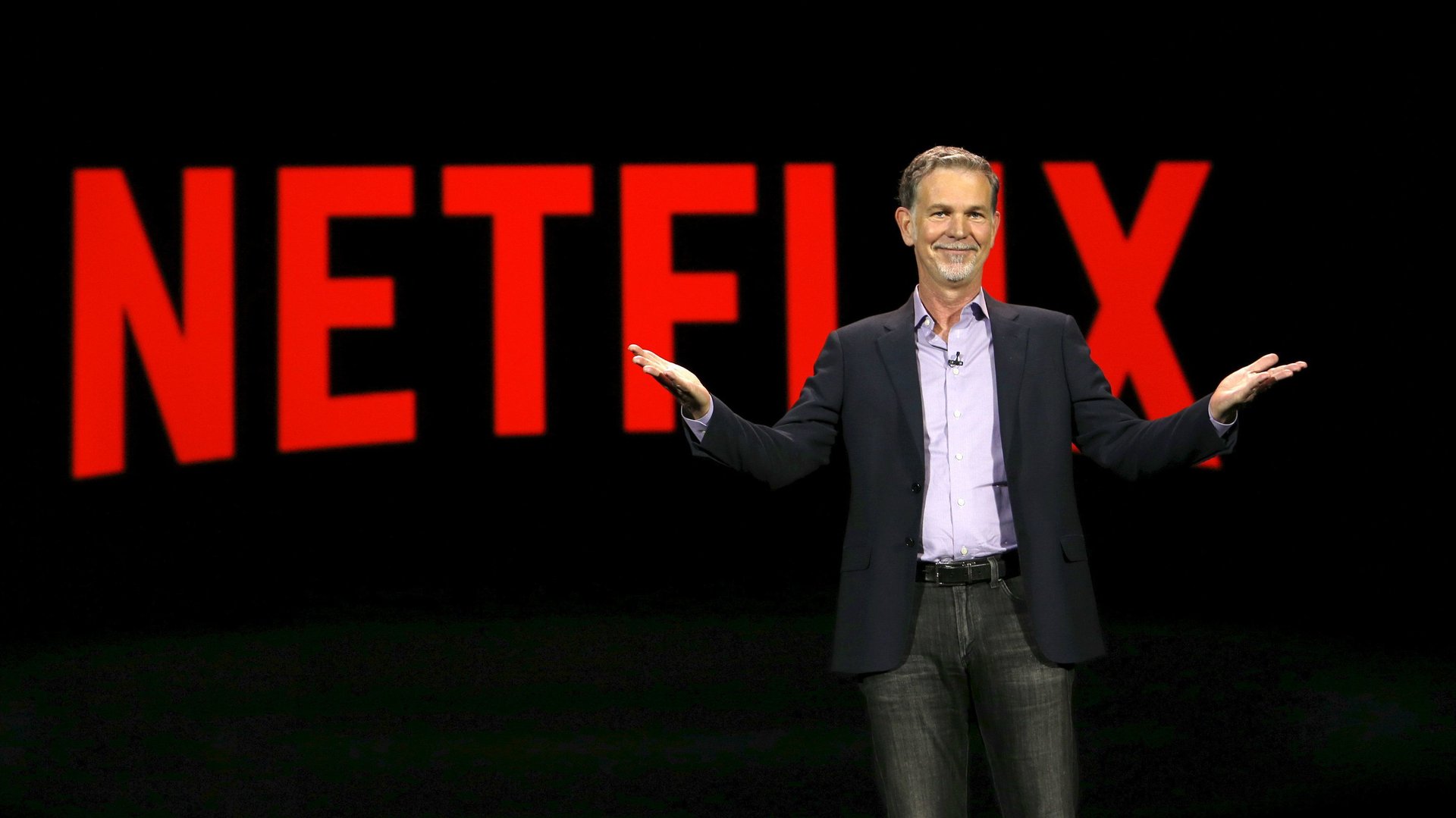Netflix’s ballooning original content bill isn’t scaring investors
Netflix is one of the biggest buyers of content globally, and Wall Street doesn’t expect it to slow down any time soon.


Netflix is one of the biggest buyers of content globally, and Wall Street doesn’t expect it to slow down any time soon.
The streaming-video giant said content will cost it between $7.5 to $8 billion this year as it lays out $12 billion from cash flow for original TV shows and movies, chief financial officer David Wells estimated on the company’s third quarter earnings call. Netflix plans to keep a ratio of about 1.55 between costs and cash flow in the foreseeable future, he said.
That could rise to $17 billion by 2023, estimated Mark Mahaney, analyst at RBC Capital Markets. ”I would assume that it’s going to increase by about $1 billion a year for the foreseeable future, for the next 5-10 years,” Mahaney said. “And there’s no reason why it can’t.”
Netflix can afford it. It added about 19 million streaming subscribers in 2016 and 23.8 million 2017. If it keeps growing by 20 million subscribers a year on average, Mahaney estimates Netflix will add about $2.5 billion in new revenue a year to its top-line. ”They’ll generally put about half of that revenue into buying new content,” Mahaney said.
Moody’s expects Netflix’s subscriber base, which now has 117 million members, to rise to 200 million by the end of 2021, with revenue growing 20% over that time period from the $11.7 billion recorded (pdf) in 2017, due in part to gradual price increases, Barron’s reported. It expects Netflix to become cash flow positive by 2022.
Investors are focused on subscriber additions because they indicate future revenue growth. Netflix will add 6.6 million streaming subscribers globally in the first quarter of 2018, when it posts earnings later today, and 25.8 million for the full fiscal year, FactSet analysts predict. That could push the stock to new heights, analysts say.
Most new subscribers are likely to come from outside the US, especially in places like Europe, Latin America, India, and other parts of Asia where the streaming service isn’t as pervasive.
Analysts at MoffettNathanson cautioned that the “singular focus on subscribers as the measurement tool for investors” clouds risks such as the cost to acquire those subscribers, quarterly churn—which Netflix doesn’t report—and lack of insight into each of the regions Netflix does business in. An April 4 investor note read:
Netflix has been the single most frustrating stock to cover in our careers. We have continually failed to remember what makes great growth stocks and instead have “wasted” our time analyzing free cash flow, cost growth, valuation and industrial changes that will impact the long-term competitiveness of the marketplace…
Our take-away is clear, yet very unsatisfying. While we expect Netflix to continue to post strong subscriber growth, leading to our above consensus forecasts in the out years, we still can’t justify the stock price under any scenario. Thus, we are left with the continued displeasure of believing that the stock is over-valued but not seeing any legitimate fundamental reason for investors to sell the stock.